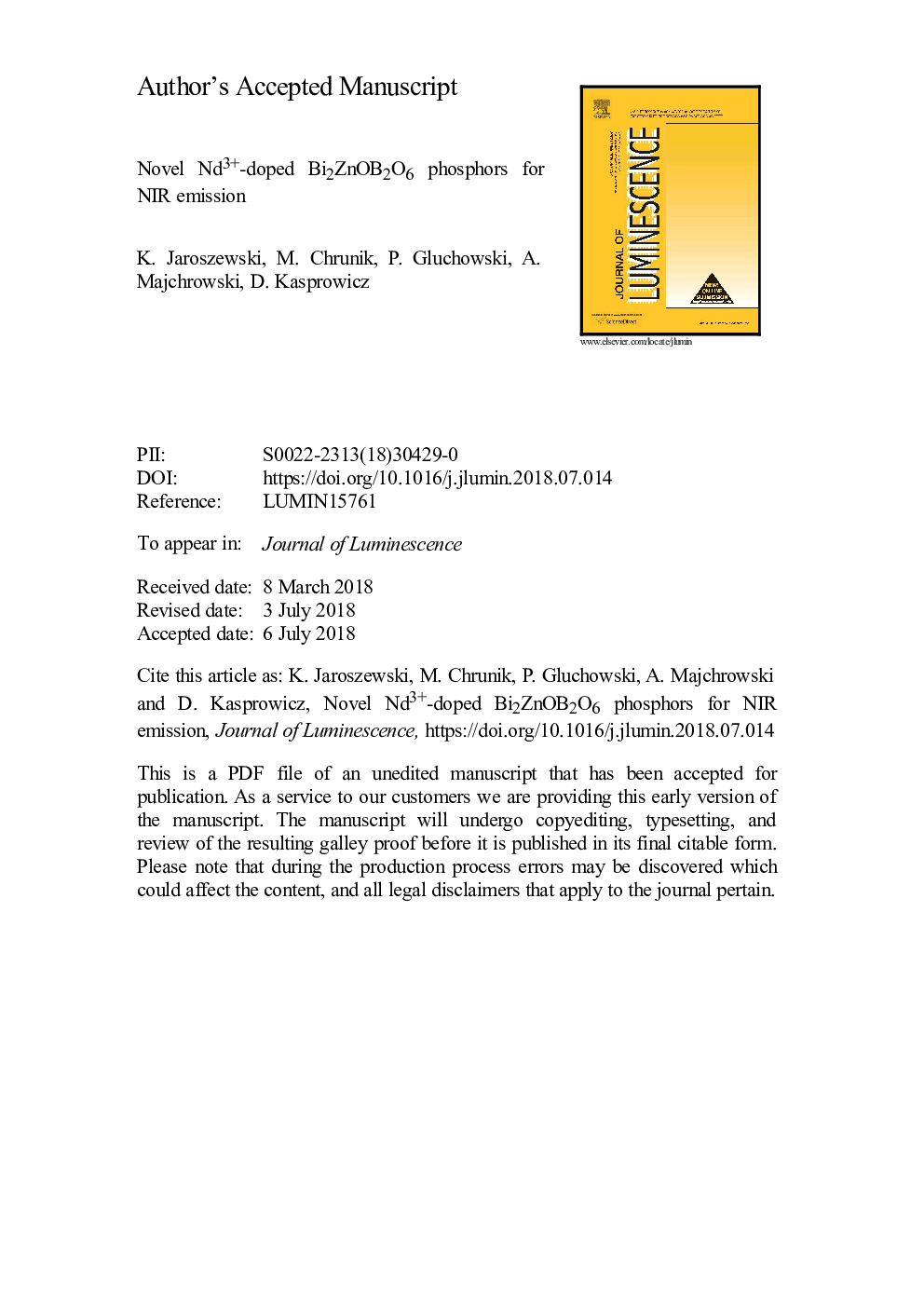| Article ID | Journal | Published Year | Pages | File Type |
|---|---|---|---|---|
| 7839818 | Journal of Luminescence | 2018 | 26 Pages |
Abstract
Bi2ZnOB2O6 crystal is an excellent nonlinear optical material as well as an efficient host matrix for luminescent ions. In this paper the structural, vibrational and spectroscopic properties of Nd3+-doped Bi2ZnOB2O6 phosphors are presented. (Bi1-xNdx)2ZnOB2O6 (xâ¯=â¯0.005 and 0.010) crystalline powders were synthesized by means of the modified Pechini method. The structure of powders was studied using XRD technique and Rietveld method. The vibrational properties of (Bi1-xNdx)2ZnOB2O6 were characterized using µ-Raman spectroscopy. The excitation spectra show the bands related to the optical transitions from the 4I9/2 ground state to the excited states (4D3/2, 2P1/2, 2K15/2, 4G7/2 + 4G9/2, 2K13/2, 4G5/2 + 4G7/2, 2H11/2, 4F9/2, 4F5/2 + 2H9/2, 4F7/2 + 4S3/2, 4F3/2) of Nd3+ ions, which can be potentially used to excite the near infrared emission of Nd3+ ions. The emission spectra show a strong luminescence at about 890 and 1062â¯nm (4F3/2 â 4I9/2 and 4F3/2 â 4I11/2, respectively), while decay curves monitored at 1062â¯nm show a relatively long emission lifetime equal to 103 and 106â¯Î¼s for 0.5 and 1.0â¯at% concentration of Nd3+, respectively. Due to their spectroscopic properties, (Bi1-xNdx)2ZnOB2O6 crystalline powders can be used for new generation NIR emitting phosphors.
Related Topics
Physical Sciences and Engineering
Chemistry
Physical and Theoretical Chemistry
Authors
K. Jaroszewski, M. Chrunik, P. GÅuchowski, A. Majchrowski, D. Kasprowicz,
